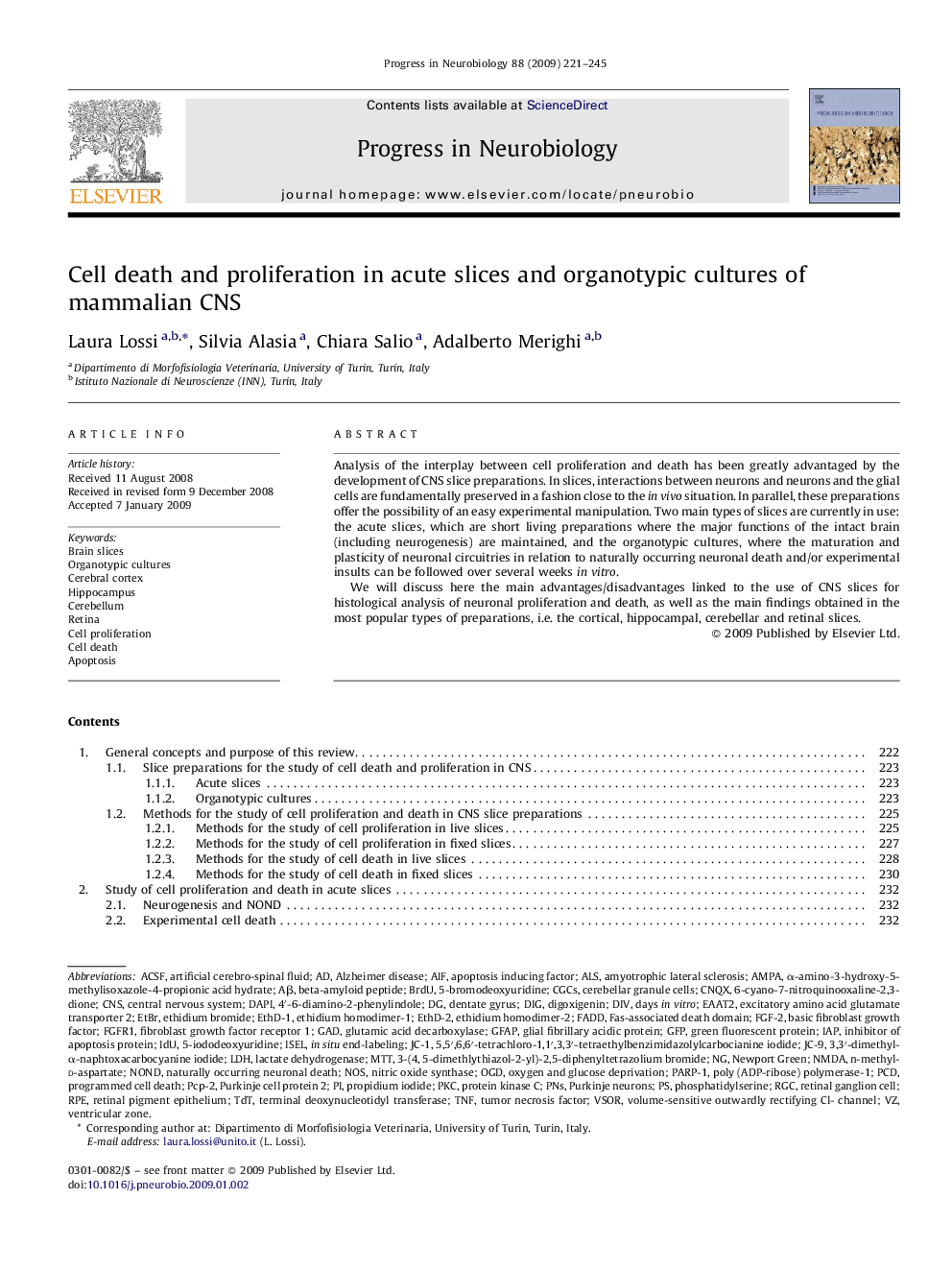| Article ID | Journal | Published Year | Pages | File Type |
|---|---|---|---|---|
| 4353699 | Progress in Neurobiology | 2009 | 25 Pages |
Analysis of the interplay between cell proliferation and death has been greatly advantaged by the development of CNS slice preparations. In slices, interactions between neurons and neurons and the glial cells are fundamentally preserved in a fashion close to the in vivo situation. In parallel, these preparations offer the possibility of an easy experimental manipulation. Two main types of slices are currently in use: the acute slices, which are short living preparations where the major functions of the intact brain (including neurogenesis) are maintained, and the organotypic cultures, where the maturation and plasticity of neuronal circuitries in relation to naturally occurring neuronal death and/or experimental insults can be followed over several weeks in vitro.We will discuss here the main advantages/disadvantages linked to the use of CNS slices for histological analysis of neuronal proliferation and death, as well as the main findings obtained in the most popular types of preparations, i.e. the cortical, hippocampal, cerebellar and retinal slices.
